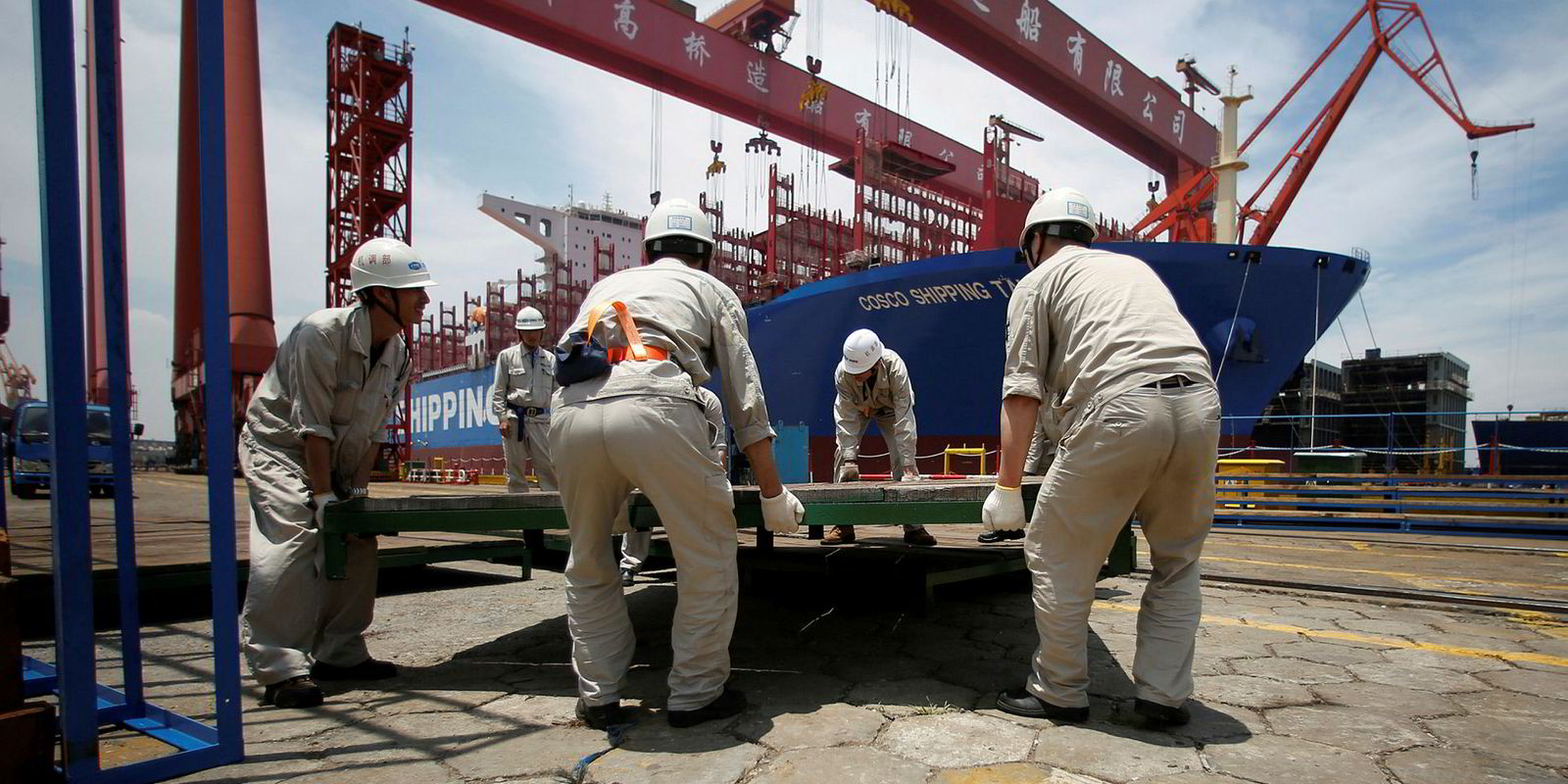Santoku Shipping Group is one of Japan's leading privately-owned tonnage suppliers, but it takes a distinctly different, and more conservative, strategy than its rivals.
Similar to compatriots Nisshin Shipping and Nissen Kaiun, Osaka-based Santoku has taken advantage of the low shipbuilding prices in recent years to expand its fleet.
However, Santoku — also known as Santoku Senpaku — will only book newbuilding orders against charter employment, unlike its rivals.
It is a good time to order newbuildings as [the] shipbuilding price is still on the low side and financing is readily available for Japanese shipping companies. But Santoku will not be tempted
Masashi Taga
“It is a good time to order newbuildings as [the] shipbuilding price is still on the low side and financing is readily available for Japanese shipping companies," Santoku president Masashi Taga said. "But Santoku will not be tempted. We are not the type of company to order ships on speculation.”
It is this conservative approach that leaves Santoku with fewer newbuildings than its peers. It has only one-third of Nissen’s 23 newbuildings and less than one-fifth of Nisshin’s 47.
Nevertheless, Santoku’s conservative strategy has served it well during the dry bulk market downturn.
Long-term employment
“Our vessels are all fixed out under long-term basis to both domestic and foreign companies," Taga said. The latter makes up the bulk of its customers.
“Santoku started working with non-Japanese companies some 20 years ago. In the past, Japanese shipping companies made up the bulk of our business. But, today, 60% of our fleet is fixed out to foreign charterers. They include Rio Tinto, Bunge, Cargill and ADM.”
Taga said the shift of Santoku’s customer base was a gradual one.
“About 10 years ago after the collapse of Lehman Brothers, Japanese charterers started to reduce the number of ships they take long term and, as a result, we turned our focus to foreign companies," Taga said. "They are more willing to take the vessels for long periods.
“We think Japanese companies will continue to fix ships under the short-term period of less than five years. We must be receptive to this change.”
Like many tonnage suppliers, Santoku has experienced charterers defaulting on contracts when the market collapsed.
“We had two companies that terminated their contracts,” Taga said, without going into details. “We will never work with them again.”
Fresh tonnage
Santoku has eight newbuildings under construction at shipyards in China.
Chinese state-owned Shanghai Waigaoqiao Shipbuilding is constructing two capesize vessels, while Sino-Japanese shipbuilder Nantong Cosco KHI Ship Engineering is building four ultramax bulkers.
Japanese-owned, but Zhoushan-based, Tsuneishi Zhoushan Shipbuilding is constructing two kamsarmaxes, and Santoku is scheduled to take delivery this year and 2021.
Santoku declined to disclose the identity of the charterers, but TradeWinds understands the capesizes will be carrying Rio Tinto cargoes.
Taga said that, although Santoku is a conservative player when it comes to new ship investments, the company is also an opportunist.
“If the hire rate is right and it allows us to order new vessels, we will go for it,” Taga said. “As a matter of fact, Santoku is one of the first few independent Japanese shipping companies to have gone to China to order newbuildings.”
In 2011, Santoku contracted a Chinese shipyard to construct up to three capesizes, for a reported price of about $57m each,to be chartered to Rio Tinto.
The strong Japanese yen was cited as the main reason behind the order for the 176,000-dwt bulkers in China at that time. The price would have been about $72.9m if the contract had been placed at a Japanese shipyard.
China doubts
“At that time, financers, banks and other shipowners were concerned over my decision in having the capesizes built by a Chinese shipyard as they had their doubts on the quality of Chinese-built ships and Chinese technology,” Taga said.
“There are always risks involved when you take on new challenges. But I was not worried ... I have the know-how in shipbuilding and I was confident that SWS was able to deliver good-quality ships and we can overcome any problems.”
Taga added that he has witnessed the improvement that Chinese shipyards have made over the years, and more Japanese companies are turning to China for new tonnage.
“I foresee that it will take Chinese shipyards a few more years to catch up with Japanese shipbuilders in delivering the same quality vessels,” Taga said.
“Im the past, we needed to base around 10 supervisors in SWS to oversee the newbuilding constructions. But, these days, we only deploy two supervisors there.”




